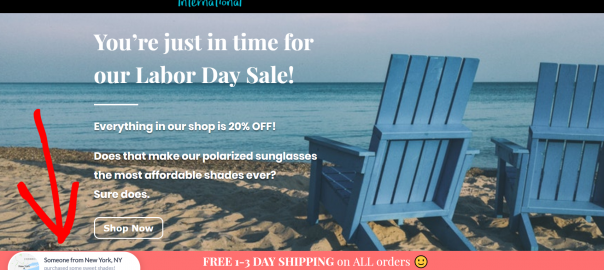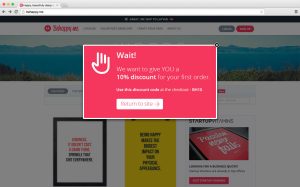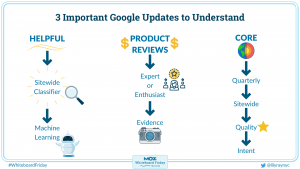Black Friday, one of the biggest shopping days of the year, is fast approaching. If you want to take advantage of Black Friday and generate more sales for your business, you need to start preparing for this crazy day now.
But with so many awesome Black Friday deals out there, how can you get more shoppers to purchase from your store?
Well, one way is to use FOMO. FOMO is the fear of missing out. FOMO is a real phenomenon and people experience it all the time. When a shopper feels like they might miss out on something amazing, like a Black Friday deal, they’re more likely to make a purchase. In fact, according to Strategy Online, 60% of millennial consumers said they make a reactive purchase after experiencing FOMO, most often within 24 hours.
So, let’s go over how to use FOMO to boost Black Friday sales.
Increase urgency with limited-time offers.
Urgency is one of the best ways to boost Black Friday sales. While there’s already urgency built into Black Friday, as it’s one day where shoppers can get amazing deals, you can increase urgency even more in a number of ways.
On your website and in your marketing for Black Friday, you should emphasize the point that your awesome deals won’t be available for long. You can use phrases like “today only” and “don’t miss our biggest Black Friday sale” to encourage shoppers to hurry to the checkout.
You can also drive more sales by adding a countdown timer like the one below that Early Learning Centre uses in their email marketing campaign.
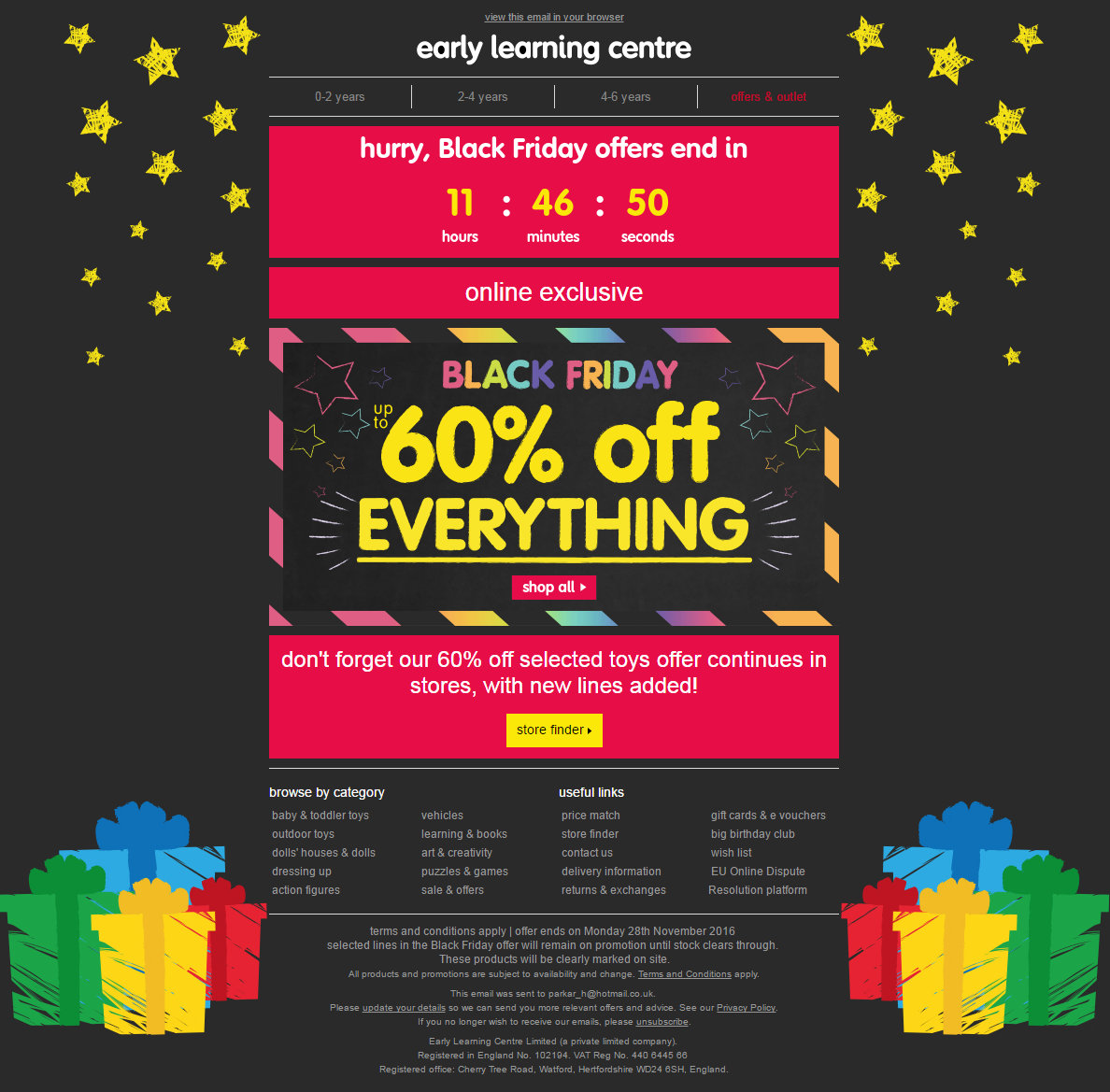
Countdown timers work so well because shoppers can visually see how much time they have left to grab discounted items. In fact, a countdown timer alone can increase conversions by 8.6%.
Display the number of items left in stock.
Similar to urgency, scarcity is another tactic that encourages shoppers to buy quickly. If they know that there’s only a few items left, they’ll rush to the checkout before it’s too late. Plus, when items are scarce, they’re perceived to have more value.
Amazon does this well by displaying how many items are left in stock on individual product pages.
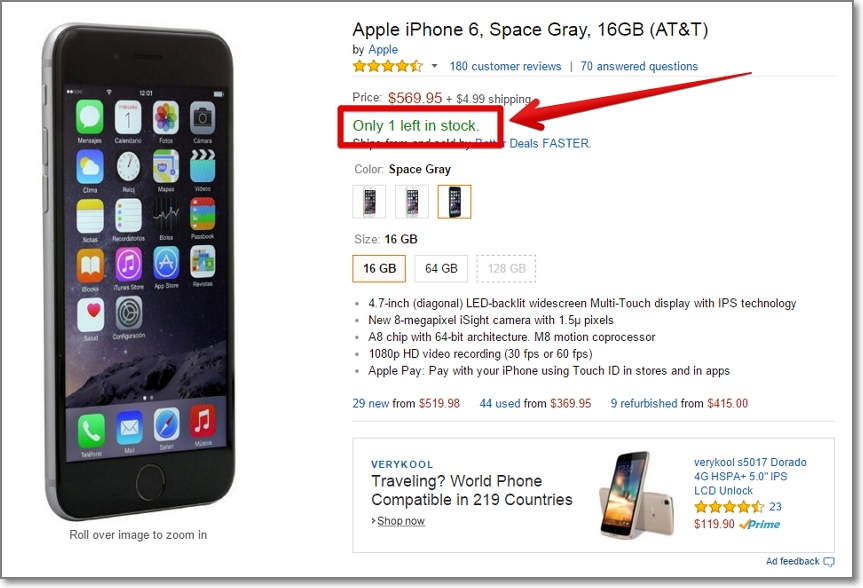
You can easily do the same by using a Shopify app like Sold Stock.
But your products don’t have to be limited in stock to use scarcity. Even if you have a large quantity of stock, products that are high in demand can create the feeling of scarcity too. For instance, you can use phrases like “while supplies last” and “get them while they last” to demonstrate that your products will be flying off the shelves.
Show that others are buying.
Social proof is a powerful strategy you can use to drive more Black Friday sales. Social proof is a phenomenon where people copy the actions of others when they see that people performed the same action in a certain situation.
For instance, if someone sees a lineup outside a new restaurant, they’ll want to eat there too because it looks so popular. You can create the same effect on your website by showing that other people are buying from you.
TrustPulse is a social proof notifications app that shows your website visitors real activity on your site such as email list signups, demo registrations, purchases, and more.
Check out the example of TrustPulse in action below.
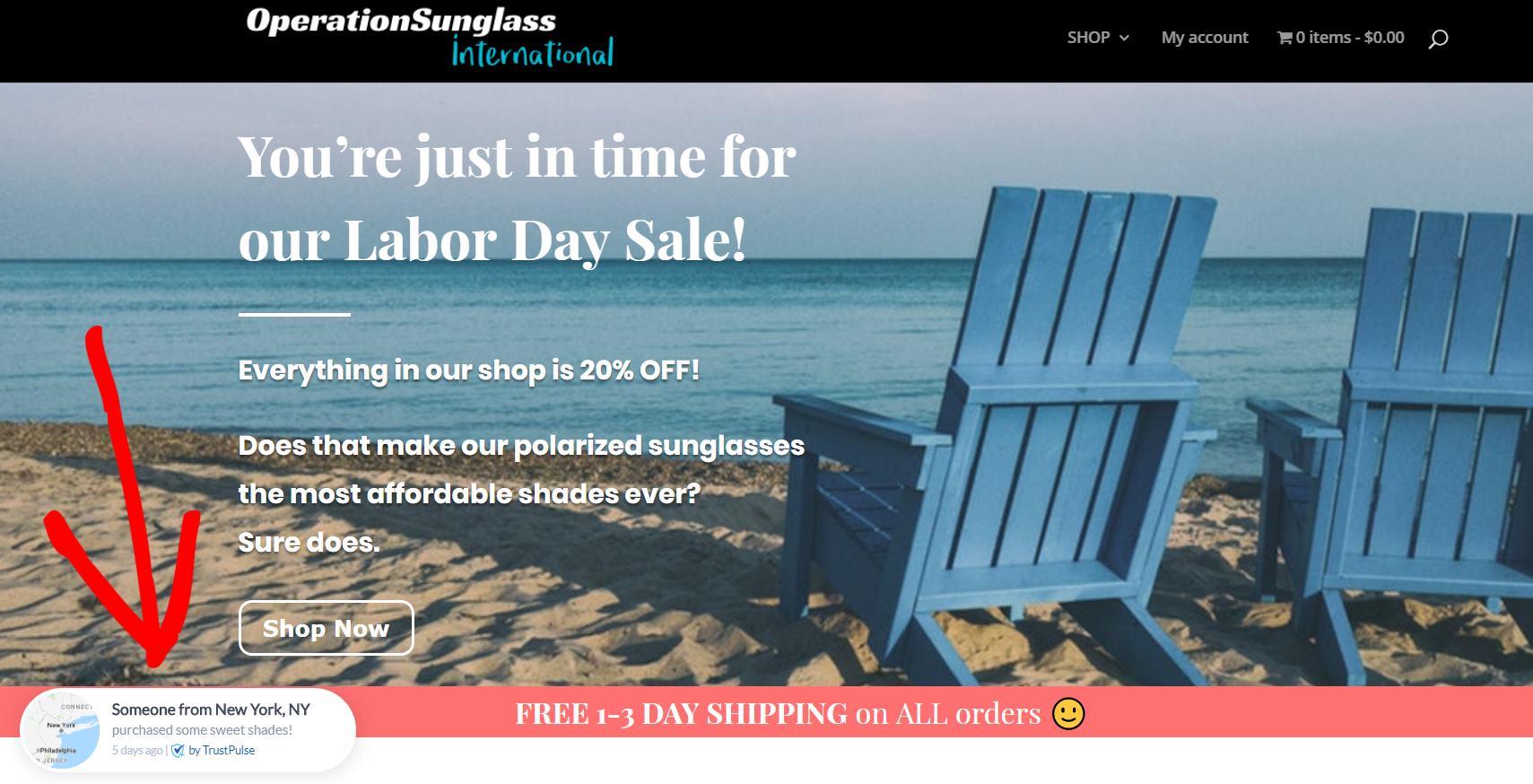
When visitors to your domain see that other people are buying items from your online store, they’ll be more comfortable making the decision to buy from you too.
Create exclusivity for your customers.
Since shoppers feel FOMO when they think that others are getting a deal that they’re not, you should create exclusivity to boost your Black Friday sales. Because if a shopper isn’t getting that special deal, they’ll do what they need to do to become a part of that special group.
For example, you can offer free shipping only to the shoppers that spend a certain amount, like on orders of $ 75 or more. Shoppers will add more to their carts to qualify for free shipping.

You can also create exclusivity by offering email subscribers a special deal, promoting members-only discounts, or offering a free gift to the first 50 people that make a purchase or buy a particular item.
Digital & Social Articles on Business 2 Community
(55)
Report Post